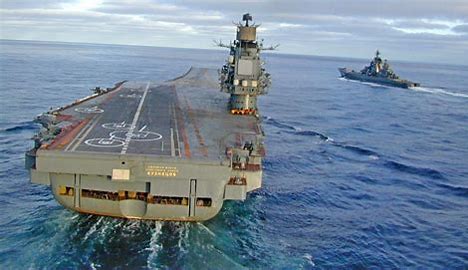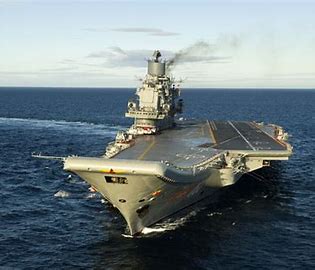
As the sun rose over the dockyards, it illuminated the silhouette of Russia’s sole aircraft carrier, the Admiral Kuznetsov. The aging leviathan, hailing from an era when the Soviet Navy sought to project its power on the high seas, now sits idle.

Plagued by a litany of technical failures, from a fatal fire to falling cranes, this vessel’s journey from Cold War prestige to post-Soviet embarrassment reflects Moscow’s naval woes at a time when it faces a strategic quagmire in Ukraine and growing international isolation.

During the Cold War, Admiral Kuznetsov was designed to serve as the lead ship of the two-ship Admiral Kuznetsov class in the Soviet Navy.

When the Soviet Union collapsed, the second planned ship, Varyag, had not been fully constructed.The construction of the carrier took place at Chernomorskiy Shipyard in the Ukrainian Soviet Socialist Republic from the late 1980s to the early 1990s.

Initially named Riga, the carrier underwent several name changes, including Leonid Brezhnev and Tbilisi, before finally being designated as Admiral Flota Sovetskogo Soyuza N.G. Kuznetsov in 1990.

While the U.S. and its allies advance their naval capabilities, Russia’s flagship carrier remains tethered to the dock, a symbol of faded glory and unfulfilled promises.

The Kuznetsov’s operational record is as bleak as the mazut fuel it burns, casting a dark smoke trail easily spotted from afar—a stark contrast to the stealth and endurance of nuclear-powered counterparts.

With only a single deployment to its name—a 2015 mission off the Syrian coast that resulted in the loss of two fighter jets—the ship has spent the subsequent years in repair. Its rare appearances at sea have often culminated in mishaps, further tarnishing its reputation.

State-run media may tout the Kuznetsov’s eventual return to service, but skepticism abounds.

The ship’s history of calamities, paired with Russia’s penchant for overstatement, casts doubt on such optimistic timelines.

With a fire erupting onboard as recently as 2022, even the United Shipbuilding Corporation’s assurance of functional fire systems does little to quell concerns about the carrier’s future.

Though official narratives cling to the hope of rejuvenation, analysts and critics see a vessel far past its prime. The Kuznetsov’s story is one of persistent mechanical issues and construction defects—a stark reminder of the limitations that continue to beset Russia’s naval ambitions.

As Ukraine leverages advanced weaponry from the U.S. and NATO allies to target Russia’s sea-based military systems, the contrast between the two nations’ naval capabilities grows ever starker. Amidst sanctions and a drawn-out conflict, resources that might have been allocated to modernize the Kuznetsov are instead consumed by the war effort.

The saga of the Admiral Kuznetsov, Russia’s beleaguered carrier, serves as a cautionary tale of maritime might overmatched by the relentless march of time and technology.

Once envisioned as a proud symbol of Soviet power, it now stands as a rusty metaphor for a Russian Navy struggling to keep pace with a rapidly evolving naval landscape.
Relevant articles:
– Russia’s Last Aircraft Carrier Is A Rusty Failure Like No Other Warship, The National Interest
– Russia’s Old Admiral Kuznetsov Aircraft Carrier Is Now ‘Non-Operational’, nationalinterest.org
– Russia’s Last Aircraft Carrier Is in Such Bad Shape It Can’t Sail Anywhere, The National Interest
– The Inside Story of How the Navy Spent Billions on the “Little Crappy Ship”, ProPublica
